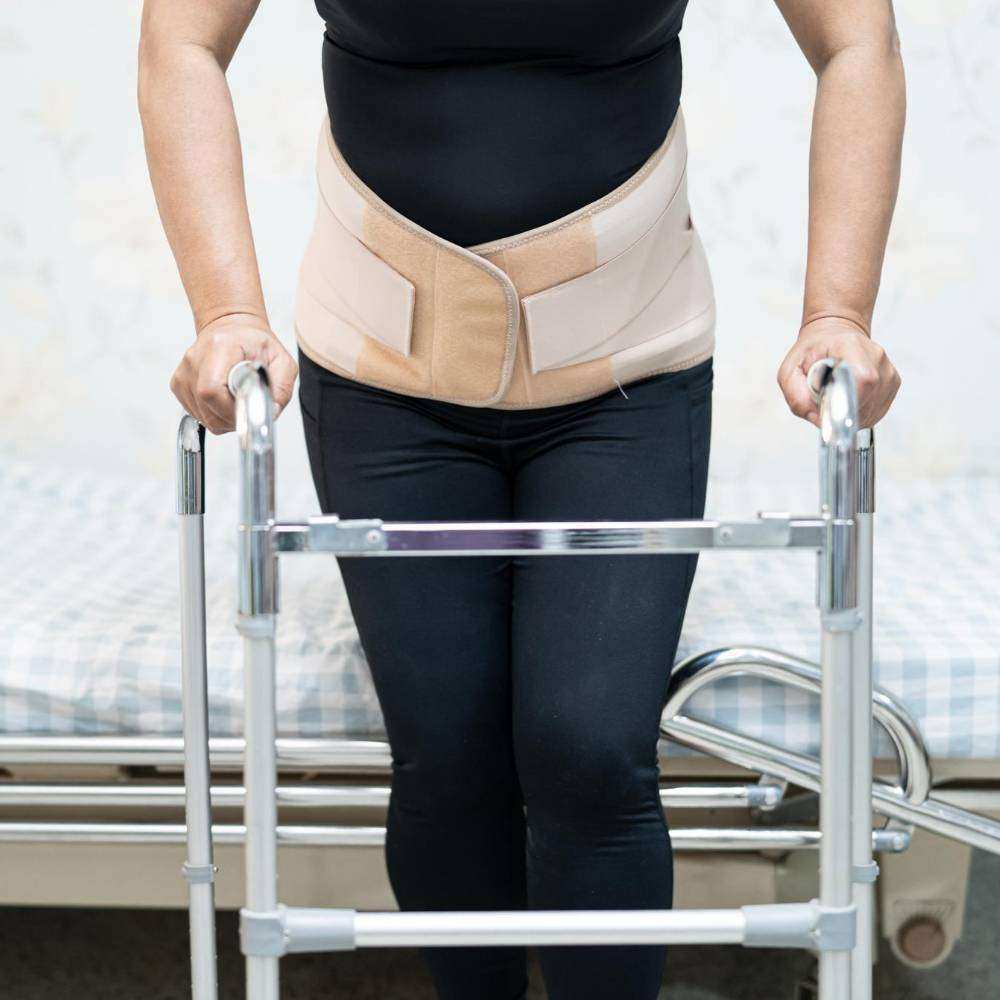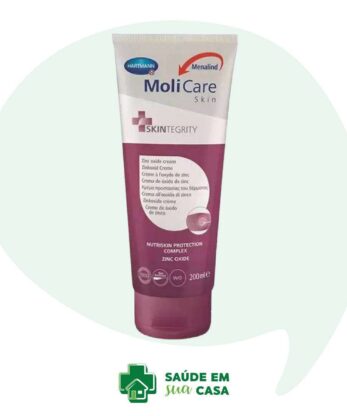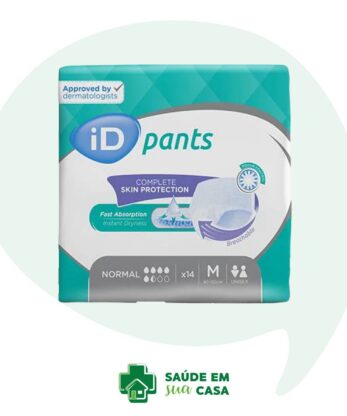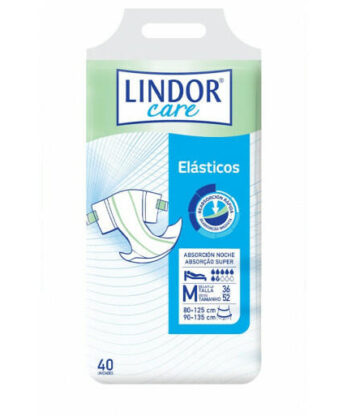Adult incontinence is a condition that can have a significant impact on the daily lives of those affected. From constant hygiene concerns to limitations in social and professional activities, the effects can be varied and often challenging to manage. It is estimated that in Portugal, a substantial number of people live with adult incontinence, although it is often an underreported and underdiagnosed condition. It is important to raise awareness and promote an open discussion about incontinence in order to improve the support and resources available to those living with the condition.
In this article, we'll explore in depth this disease that is often underestimated, from its basic definitions to its complexities. We'll unravel what adult incontinence is, examine its various causes and identify the symptoms that can affect quality of life. What's more, we'll not only discuss the treatments available, but also provide strategies for living a balanced life despite these challenges. Because, after all, incontinence shouldn't be an insurmountable obstacle to a fulfilling and rewarding life.
What is incontinence and what causes it?
Incontinence is a condition characterized by the involuntary loss of urine or faeces. It can occur in different forms and severities, affecting both men and women of all ages. There are several underlying causes for incontinence, which can vary depending on the specific type of the condition. Among the most common causes are:
-
Muscle weakness: The pelvic floor muscles are responsible for controlling urination and defecation. If these muscles are weakened due to factors such as pregnancy, childbirth, aging or pelvic surgery, incontinence can occur.
-
Nerve Damage: Damage to the nerves that control the bladder and anus can lead to loss of control over urination and defecation. This can be caused by conditions such as diabetes, multiple sclerosis, stroke or spinal cord injuries.
-
Obstructions: Any physical obstruction that prevents the normal flow of urine or feces can cause incontinence. This can include conditions such as an enlarged prostate in men, chronic constipation or tumors.
-
Hormonal imbalances: Changes in hormone levels, especially during the menopause in women, can contribute to stress urinary incontinence.
-
Lifestyle factors: Habits such as excessive consumption of alcohol, caffeine or spicy foods can irritate the bladder and lead to incontinence. Smoking can also be a risk factor.
-
Underlying Health Conditions: Some health conditions, such as urinary tract infections, obesity, heart or lung disease, can increase the risk of incontinence.
Does adult incontinence affect more men or women?
Adult incontinence can affect both men and women, but statistics show some differences in prevalence rates between the sexes and in the types of incontinence most common in each group. In general, women tend to be more affected by incontinence than men, mainly due to factors such as pregnancy, childbirth and menopause, which can weaken the pelvic floor muscles and bladder support tissues.
Stress urinary incontinence, for example, is more common among women, while urge urinary incontinence and mixed incontinence are more frequently reported in men. However, it is important to note that incontinence can occur in anyone, regardless of gender, and its prevalence can be influenced by a variety of factors, including age, underlying health conditions and lifestyle.

What are the initial symptoms of incontinence?
The initial symptoms of incontinence can vary depending on the specific type of the condition and its underlying causes. However, some common symptoms may include:
-
Involuntary Loss of Urine or Stool: The most obvious and common symptom of incontinence is the involuntary loss of urine or stool. This can occur during activities such as coughing, sneezing, laughing, lifting heavy objects or even during sleep.
-
Sudden Urge to Urinate or Defecate: People with incontinence may feel an urgent and sudden need to urinate or defecate, often followed by an inability to hold in urine or feces until they reach the toilet.
-
Frequent urination: The need to urinate more frequently than normal, especially during the night (nicturia), can be a symptom of incontinence, especially in cases of urge incontinence.
-
Dripping or Leaking Urine after Urinating: Some people may experience dribbling or leaking urine after urinating, which can be a sign of stress incontinence.
-
Feeling of Not Emptying Bladder or Bowels Completely: People with incontinence may feel that they cannot empty their bladder or bowels completely, even after urinating or defecating.
Facts and myths about incontinence
Navigating the world of incontinence can be confusing, with a myriad of information and popular beliefs about the condition. However, it is crucial to separate fact from fiction when it comes to this delicate and often underestimated topic.
Below are some facts and myths about this condition:
Facts:
-
It's a Common Condition: Incontinence affects millions of people around the world, of all ages, races and genders.
-
It can be treated: Although incontinence can be debilitating, there are many treatment options available, including behavioral therapies, medication, medical devices and surgery.
-
It's not a normal part of aging: Although it is more common in older people, incontinence is not an inevitable part of ageing and should be treated appropriately.
-
It can have a psychological impact: Incontinence can have a significant impact on quality of life and mental health, leading to feelings of shame, isolation and depression.
-
The Importance of Pelvic Floor Exercise: Pelvic floor exercises, such as Kegel exercises, can help strengthen the pelvic floor muscles and improve bladder and bowel control.
Myths:
-
Only Women Are Affected: As already mentioned, although women have a higher prevalence of incontinence due to factors such as pregnancy and childbirth, men can also be affected, especially as they get older.
-
Incontinence is a Sign of Ageing: Although age can be a risk factor for incontinence, people of all ages can be affected, including young people and children.
-
There's nothing you can do: Many people mistakenly assume that incontinence is an unavoidable and untreatable condition. However, there are many treatment options available that can significantly improve symptoms.
-
It's Just a Matter of Drinking Less Fluid: Although reducing fluid intake can help reduce symptoms in some people, dehydration can make incontinence worse and it's important to stay hydrated.
-
Incontinence cannot be prevented: Although it's not always possible to prevent incontinence, there are measures you can take to reduce the risk, such as maintaining a healthy weight, practicing pelvic floor exercises and avoiding smoking.

Is there treatment for incontinence?
Yes, there is treatment for incontinence. Treatments vary depending on the specific type of incontinence, its severity and its underlying causes. Some common treatment options include:
-
Behavioral therapies: This includes techniques such as bladder training, urination scheduling and pelvic floor exercises, which can help strengthen the pelvic floor muscles and improve bladder control.
-
Medicines: There are medicines available to treat different types of incontinence, such as urge urinary incontinence. These drugs can help relax the bladder or reduce urine production.
-
Medical Devices: Devices such as urethral compression devices for male urinary incontinence or intravaginal devices for female urinary incontinence can be used to help control symptoms.
-
Surgery: In more severe cases or when other treatment options are not effective, surgery may be recommended. There are different surgical procedures available, depending on the type and cause of incontinence.
-
Electrical Stimulation Treatments: These treatments involve the use of electrical stimulation to strengthen the pelvic floor muscles and improve bladder control.
Incontinence and quality of life: What products to use and where to buy?
When it comes to managing incontinence and improving quality of life, there are a variety of products available that can help manage symptoms and maintain confidence and comfort.
Some of the most common products include:
-
Absorbents and disposable diapers: Available in a wide variety of sizes and absorbency levels, disposable diapers are often used for urinary and fecal incontinence. They help keep the skin dry and prevent urine leakage.
-
Mattress protectors and absorbent pillows: These products are designed to protect mattresses, sofas and chairs from urine leaks and can be especially useful during the night or in travel situations.
-
Protective creams and ointments: To protect the skin from irritation and rashes caused by prolonged contact with urine or feces, protective creams and ointments are recommended.
-
Cleaning wipes and personal hygiene products: Gentle, alcohol-free cleansing wipes can be used to clean delicate skin, while personal hygiene products, such as dry-cleaning gel, help maintain intimate hygiene.
-
Odor control products and deodorants: Deodorants and odor-neutralizing sprays can be used to help reduce unwanted odors associated with incontinence.
At the Saúde em Sua Casa store, both online and in person, you can find a wide variety of items that will help you live better with incontinence and, consequently, improve your quality of life. From disposable diapers of different sizes and absorbency levels to skin care products such as creams and protective ointments, the store offers a complete range of products to meet your needs. In addition, you can find mattress protectors and absorbent pads to protect furniture and mattresses from urine leaks, as well as personal hygiene products such as cleansing wipes and other solutions. Always with the ease of being able to buy online or visit the physical store, Saúde em Sua Casa offers affordable and effective solutions to help you deal with incontinence and enjoy a more comfortable and confident life.
In addition to the wide range of products available, the professionals at Saúde em Sua Casa are always on hand to help you make the right choice for your specific needs. Whether online or in-store, our trained and experienced team is ready to offer personalized guidance and expert assistance. They can help you understand the characteristics of each product, offer recommendations based on your individual situation and ensure that you find the products that best meet your needs. If you have questions about sizes, absorption types, compatibility with other products or any other incontinence-related issue, the professionals at Health at Home are there to help. They are committed to providing excellent service and ensuring that you have a smooth and satisfying shopping experience.






